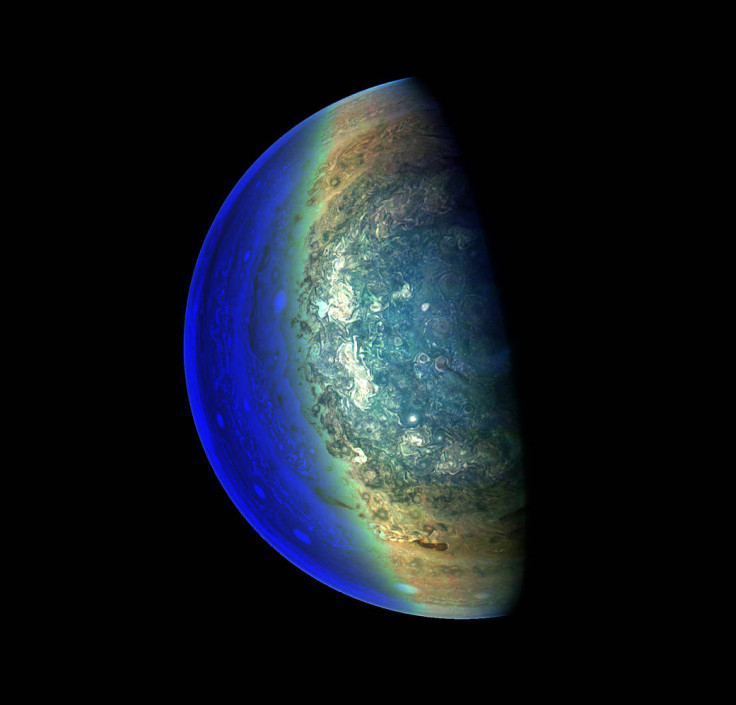Nasa captured this image of Jupiter's 'twilight zone' and it is breathtakingly beautiful
The area of Jupiter photographed by the JunoCam is where the "day meets night".

Jupiter, our solar system's gas giant, currently has a man-made object buzzing around it, attempting to gather as much information about the planet as possible. Nasa's Juno spacecraft, which was launched in 2011, took an incredible image of Jupiter's "twilight zone" while zooming past the gas giant during its 11<sup>th flyby.
The photograph of the gas giant's cloud formations was taken by the JunoCam instrument aboard Nasa's probe. The Juno spacecraft was hovering 120,533 kilometers away from Jupiter's cloud tops on 7 February, when it shot the photograph.
"To make features more visible in Jupiter's terminator — the region where day meets night — the Juno team adjusted JunoCam so that it would perform like a portrait photographer taking multiple photos at different exposures, hoping to capture one image with the intended light balance. For JunoCam to collect enough light to reveal features in Jupiter's dark twilight zone, the much brighter illuminated day-side of Jupiter becomes overexposed with the higher exposure," Nasa said in a statement.
According to Nasa, the image was processed by citizen scientist Gerald Eichstädt. This photo is one of a series of images, captured as part of an experiment, to gather the most optimum results of the brightest parts of Jupiter's polar regions.
Juno's mission involved peering deep into Jupiter's atmosphere to gather information about its atmosphere, composition, temperature, cloud motions and more. The spacecraft is also tasked with determining how much water the gas giant possesses and gathering data that will help scientists figure out more about planet formation in the solar system.






















